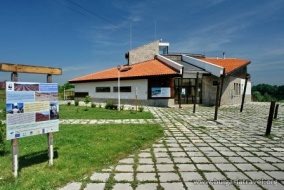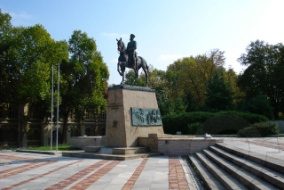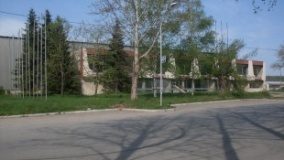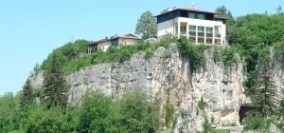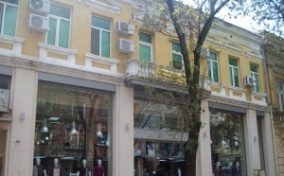

“Persina” has been founded by the Order No. RD – 684 of 04.12.2000 by the Ministry of the Environment and of the Waters and it is one of the youngest natural parks from Bulgaria. It is situated on the territory of three Danube municipalities Nicopole, Svishtov and Belene, with a total surface of 21.762, 2 hectares. The administration of the park is situated in the city Belene, a small city, picturesque on the fertile river in Sviștov and Belene at the depression. “Persina” is unique for Bulgaria and it is the only Bulgarian valley of the river. It is followed the conservation of the objectives and the restoration of the humid areas of the Danube, with a special accent on the conservation of the natural state of numerous islands which enter in the limit of the park – the island groups of Nikopol – the island Belene – the famous archipelago Belene of the Danube (BDA), consisting of 19 island, five of them Conto Romanian. BDA has a total length of approximately 18 km. Here is situated the biggest Bulgarian island of the Danube and the forth as measure from Europe, Persin (the village Belene), which gave the name of the natural park. His length is of 15 km and the width of up to 6.
The uniqueness and the special importance of this group of islands made that on 24.09.2002 to be declared the Ramsar site, which is the biggest from the area from Bulgaria – 6898 hectares. The most important ecosystems among the park are the frontager flooded forests and the interior marshes. For the conservation of these habitats there were declares a series of area protected.
It has been created by the Order No. 1106 / 02.12.1981 of CPS, for the conservation of the marshes of the Danube and the typical vegetation of the marshes, together with the colonies of terns, seagulls, cormorants, herons, wild ducks and geese. Its total surface is of 385, 2 hectares and includes the following territories: “the Marsh Pischensko” with a total surface of 182 hectares, “the Dead Marsh” with a total surface of 122, 6 hectares and the “Old Marsh” with “Dulyova bar” the area of 80, 6 hectares. By the Order RD – 393 / 15.10.1999 the reservation is classified as a maintained reservation with the same name and dimension. The reservation the “Marsh Persinki” is a humid area of international importance; a paradise in the past for numerous colonies of birds of passing through the riding way – of terns, seagulls, cormorants, herons, wild ducks and geese; for the nest of the silent swans; the unique autumn gathering in the country of black storks. In the reservation there can be seen species of rare plant and on the verge of extinction dzhulyun, four Nostrum, floating udare, yellow kakichi, dropsy, mehurka insectivorus.
“Persina” is situated in the bio-geographic sub-region of the Danube, which is part of the area euro-Zapadnosibirskata Paleoarktichnoto, bio-geographic land. There are described 475 species of vascular plants, 162 of them are strongly connected with the presence of the water. In the insular marshes, the drainage channels can be met a variety of formations of plants. The natural forest communities are represented by diverse associations, dominated by willow trees, with the biggest surface of the areas of white willow trees / Salix alba I. The flooded coast is characterized by different groups of white willow trees Salix alba and trichinkovata Salix triandra / the osier willow tree / Salix purpurea. In the layer of trees of these communities there can participate more black / Populus nigra and the white poplar / Populas alba, the grey field / Franksis oxycarpa, and white elm tree / Ulmus minor and Ulmus laevis. The unique dense nature of these communities is owed to the well developed curtain of wild grape vine and of hop / silvesths Vitis, Humulus luputus.
The representatives of shrubs of the forests are the hawthorns, the privet, the red Viburnum, caesius IRubus a morph, Crataegus monogina, dogwood, Viburnum opulus, Euonimus europaeus, Amorpha fruticosa. The open spaces are occupied principally by the twitch, the crawler, the sugar cane / Cynodon dactylon, Agrostis alba, Stripus mishelianus and others. There exists a grand variety of vegetation. Among the most frequent species there are representatives, such as the mullen / with curative and silk fibers / crawling heather, the mousetail of wild barley, the fine grass and Brome dalgoosilesta Brome / blataria Verbascum, phlomoides, V. lyhnitis, Elymus repens, Hordeum murinum, Sclerohloa Dura, Poa pratense, Poa compressa, Molis Bromus, Bromus sterilis.
The Natural Park Persina is an important storage place for the populations of species of plants mentioned in annex I of the Convention from Berna / Salvinia natans /, devil’s nut / Trapa natans / and four Nostrum / Marsilea quadrifolia / or the ones listed in the Red Book of Bulgaria as trirabest, kakichka tiroidă, mehurka simple of water yellow and white, rose, summer snow flake, bright tulichina / trichoides Potamogeton, Nymphoides peltata, Utricularia vulgaris, Nymphaea white, Nuphar lutea, Leucojum aestivumq, Euphorbia lusida and others.
In the geographical zonation PNP is situated in the Danube space under – region European – Siberian. In park there exist approximately 1.100 species of animals, including 250 zooplankton and 99 species of benthos and over 770 species of invertebrates, 35 species of snails and 16 species of mussels. The most frequent species of fish are: Loach / Cobitis bulgarika /, mreana of the Danube / barbell /, govedarka / Lota lota / Abramis balerus /, beluga / Pelecus cultratos /, vretenarka small and bif / Zingel Steber and zingel /, sebastă / Aserina cernua /. There are 11 species of amphibians, the most typical representatives: the frog / Rana ridibunda /, the edible frog / Rana esculenta/, Bufo bufol /, lingău / Bombina bombina / și broască de copac / Hyla Arborea /, reptile / Bombina bombina / and the tree frog / Hyla Arborea /. Only here there appear endemics of Danube of three tones / Triturus cristatus dobrogicus / From the reptiles the most familiarized is Snake ordinare / Natrix natrix /, the lizard Crimeea / Lasetra taurika / Eryx milliaris /. There also exist three types of turtles: the maur turtle / Testudo graesa / gratska Tortoise / Testudo hermanii / and the regular pond turtles / Emys orbicularis /.
The biggest richness of the park is represented by the birds. There are described over 200 species and almost all of them have a conservation area. The island complex Belene is designated as being one of the most important regional habitats for five cormorants.
Phalacrokorax carbo /, Cormorant / Palacrocorax pygumeus /, Night egret / Nycticorax Nycticorax /, ralloides Squacco Heron / ralloides / small egret / Egretta gatzetta /, big egret / Egretta white /, purple aigrette / Ardea purpurea /, the bencher / Platalea leucorodia /, țigănuși / Plegadis falcneus /, the marthlets / Aythya nyroca. In the last years / 1968 – 1971 / it was localized one of the numerous colonies of herons which disappeared because of the deforestations and of the breaking of the base of intake products, after the construction of a barrage on the island. Now, there exists a mixed colony situated on the Romanian island / at the km. 573 composed of Cormorants / Palacrocorax pygumeus /, the Cormorant / Phalacrocorax carbo / the Night aigrette / Nycticorax Nycticorax /, ralloides Squacco Heron / ralloides / small egret / Egretta gatzetta /, the benchers / Platalea leucorodia /. It is believed that this colony is a direct successor to Belene, from the island from the year 70 of the XXth century and has all the chances of returning after the re-doing of the humid areas.
On the territory of the PNP there are registered 5 nests of big vulture / Haliaetus Haliaeetus / two pairs of this specie of birds.
The complex the Island Belene has been identified as being one of the most important areas for fifty birds from Bulgaria. Therefore it was declared as Ramsar site in September 2002, the biggest one from Bulgaria, with a total surface of 6898 hectares. Because of the large number of birds which come for reproduction, wintering, for the migration of the birds, this is a domain of European importance. PNP is the home for the species on the verge of extinction, such as the Cormorant / Palacrocorax pygumeus / Red Goose / Branta ruficollis /, the Duck / Aythya nyroca /, the cornerake / Crex crex /, the pelican / Pelicanus crispus / Pitulice / Acrocephalus palustris / and others. The everglade forests and the marshes of the island Zaton are an integrating part of the migrating corridor of the Danube, which is essential for the reproduction of many invertebrates, fish and birds which are fed with fish during the nesting and during the autumn migrations.
The mammals which populate these habitats should be numbered and included in the annex II of the river in the Convention from Berna: the otter Ilutra lutral. Other representatives of the typical different mammals are the rodents, the deer / Capreolus capreolus /, the fitchew / Putorius putorius /, the fox / Vulpes vulpes /. the Boar / Sus scrofa / which impress with their big population.
